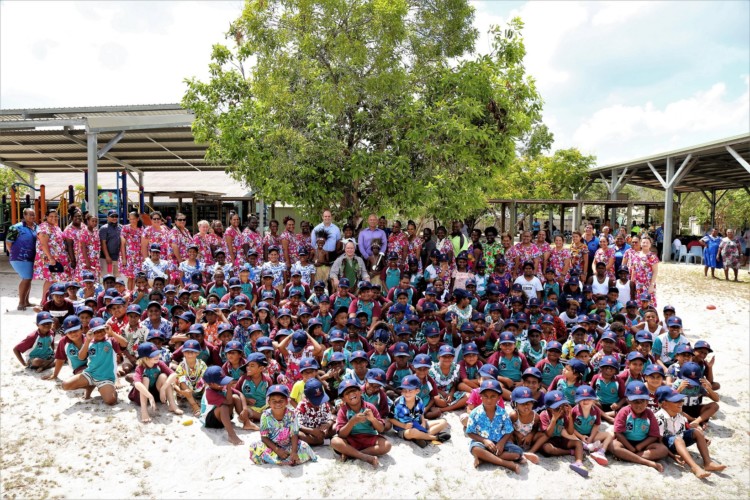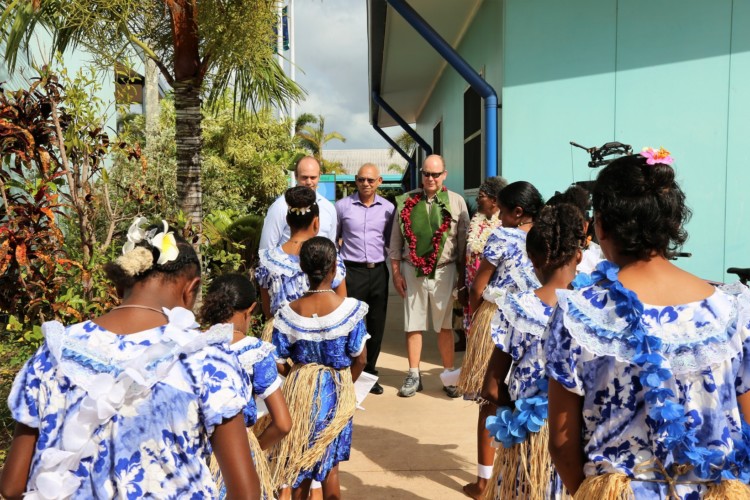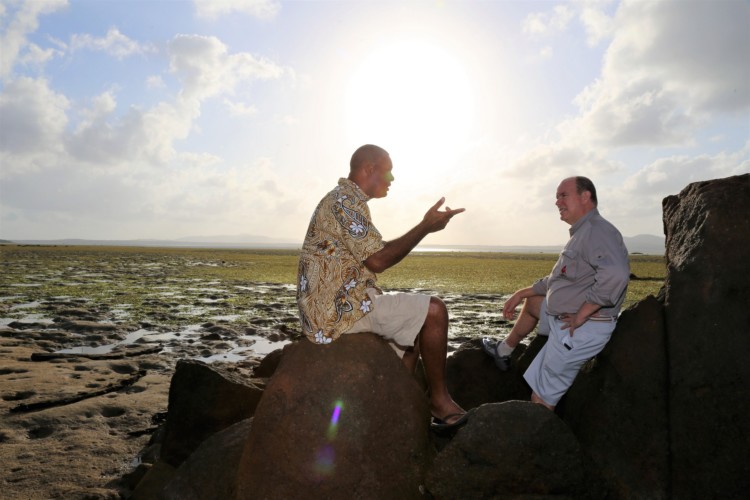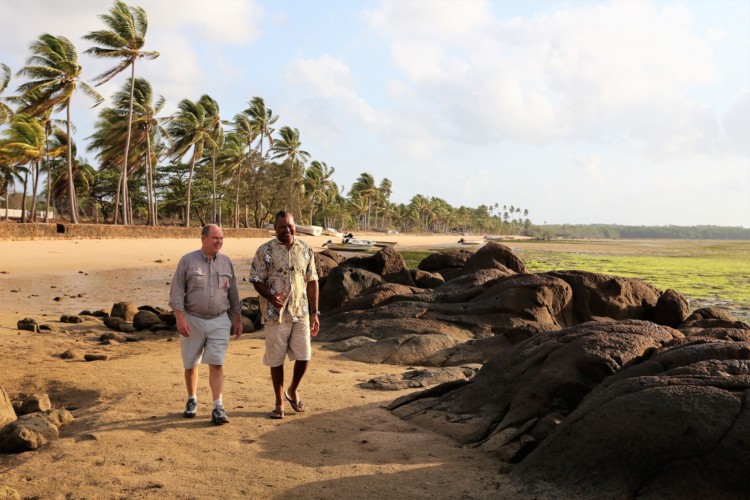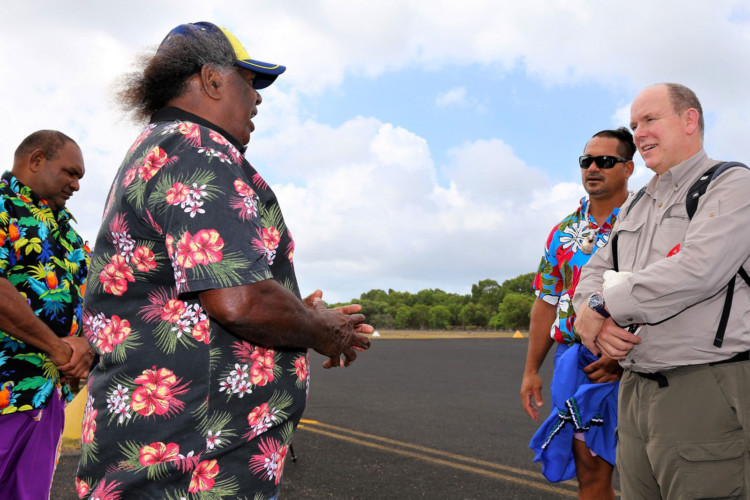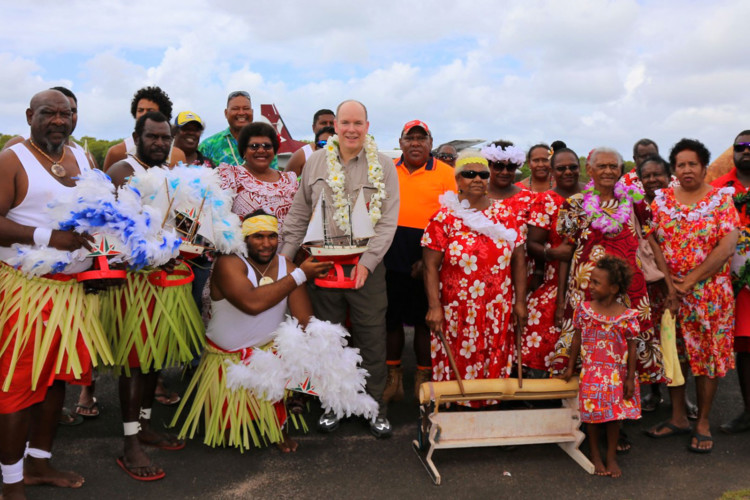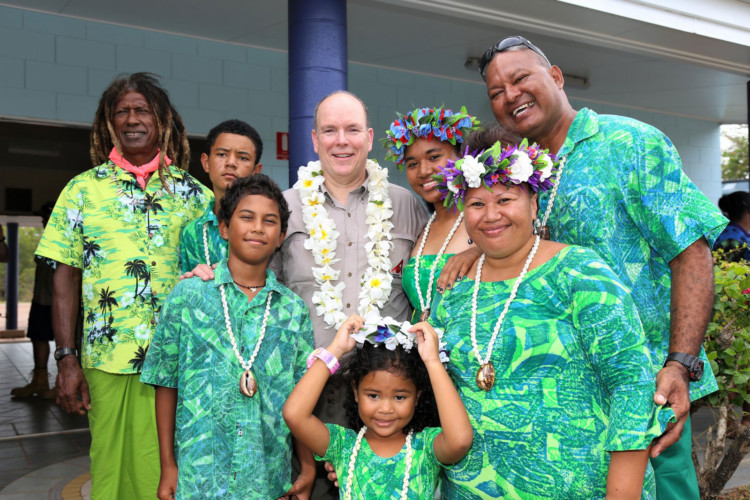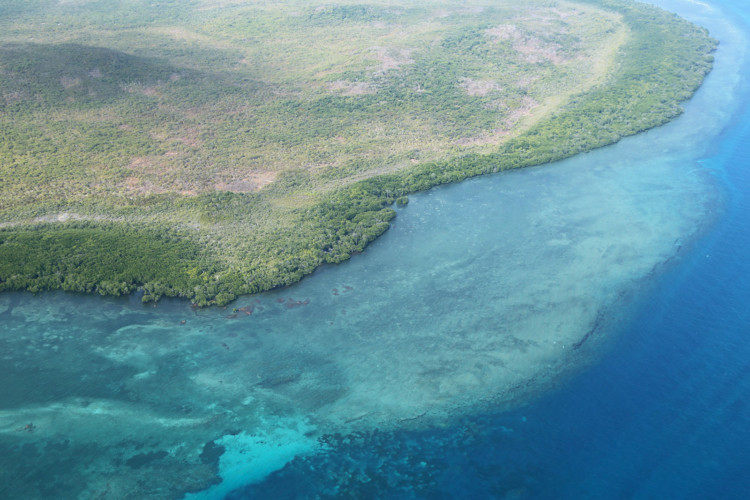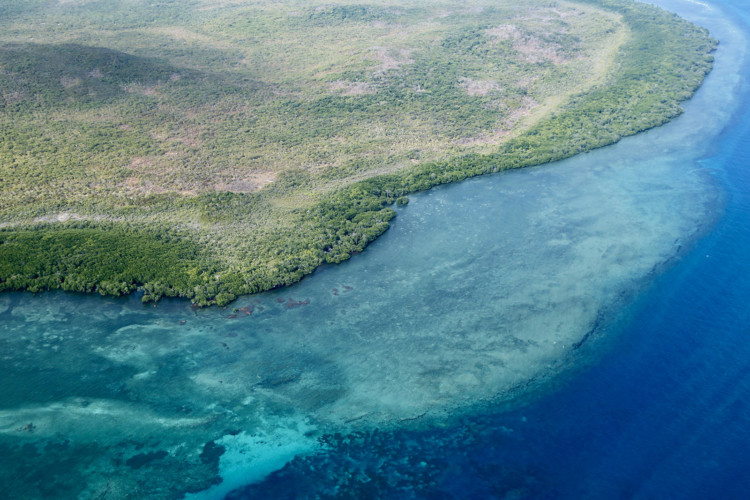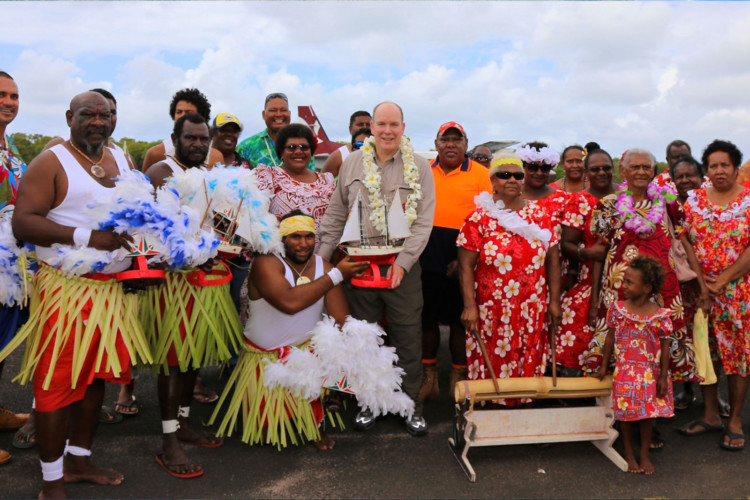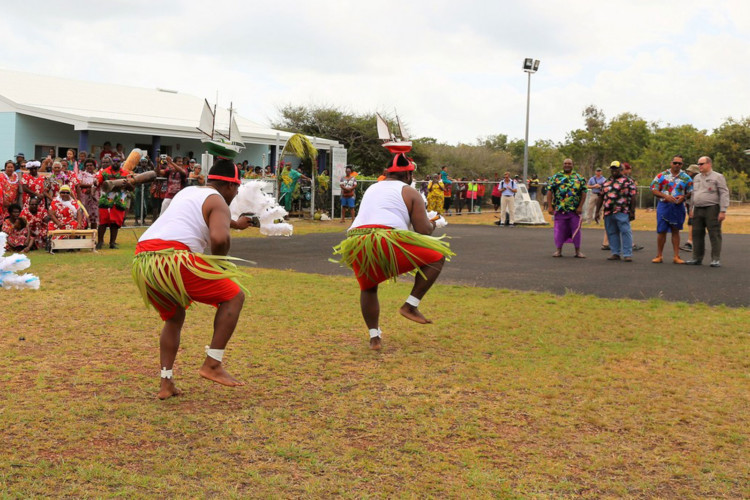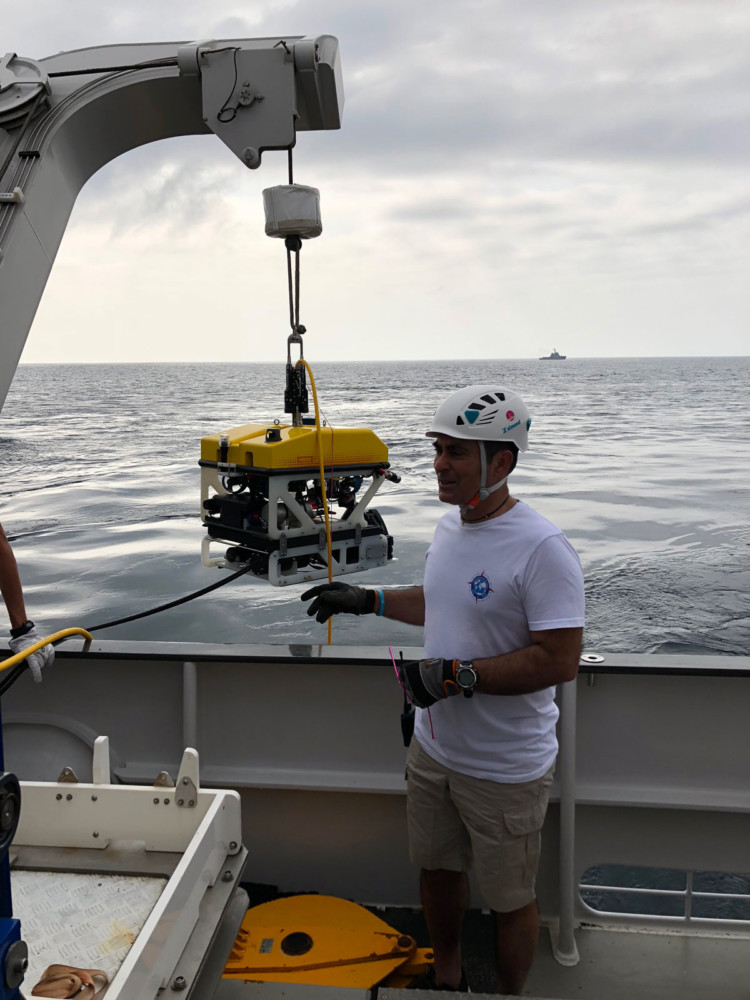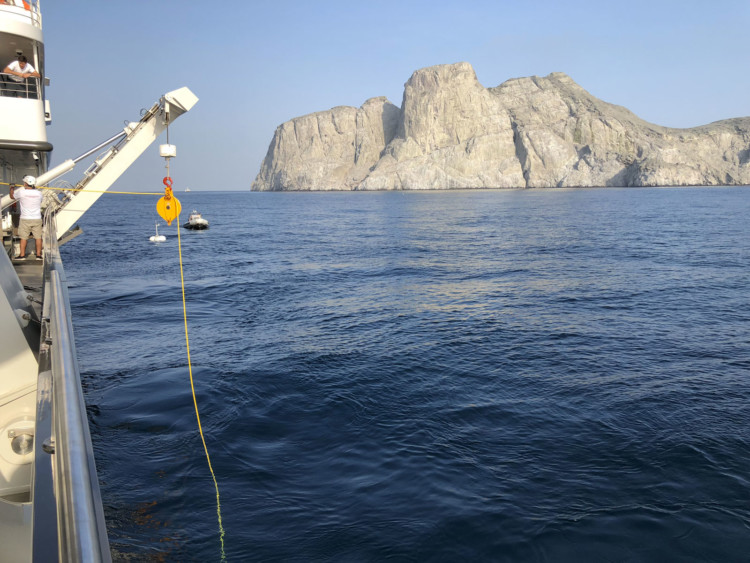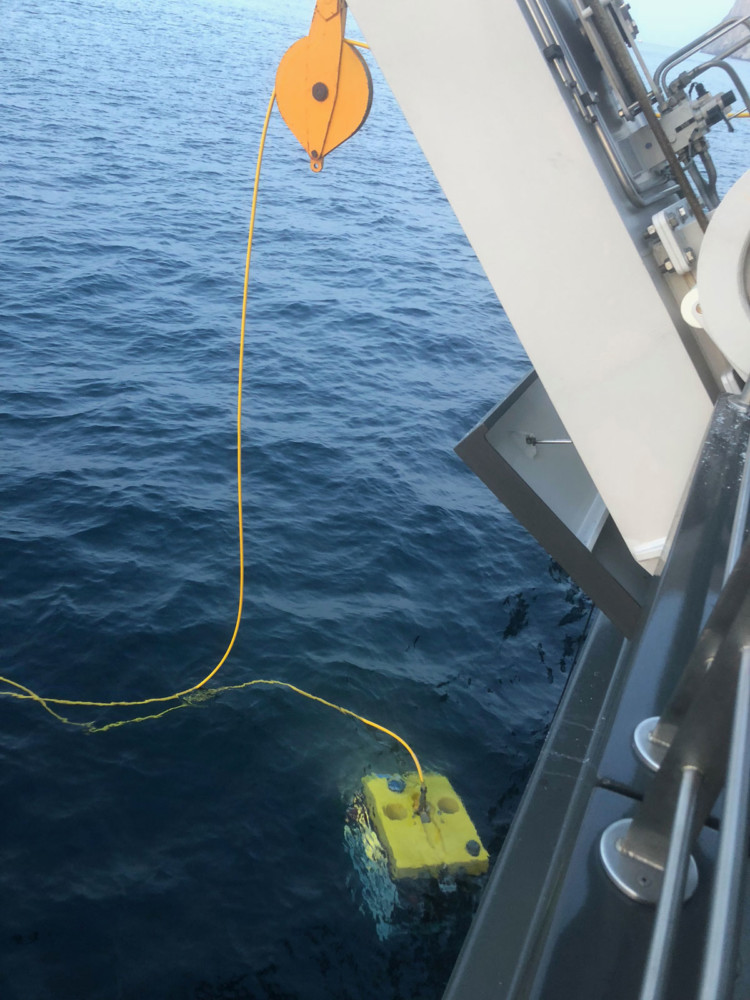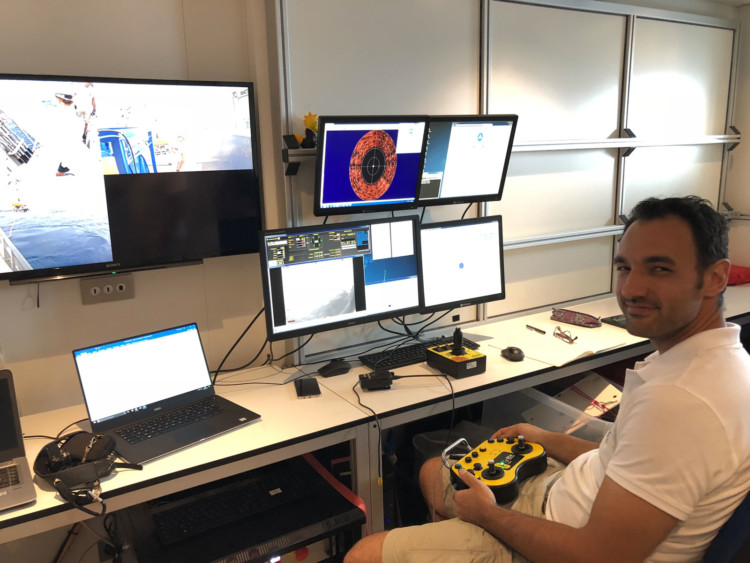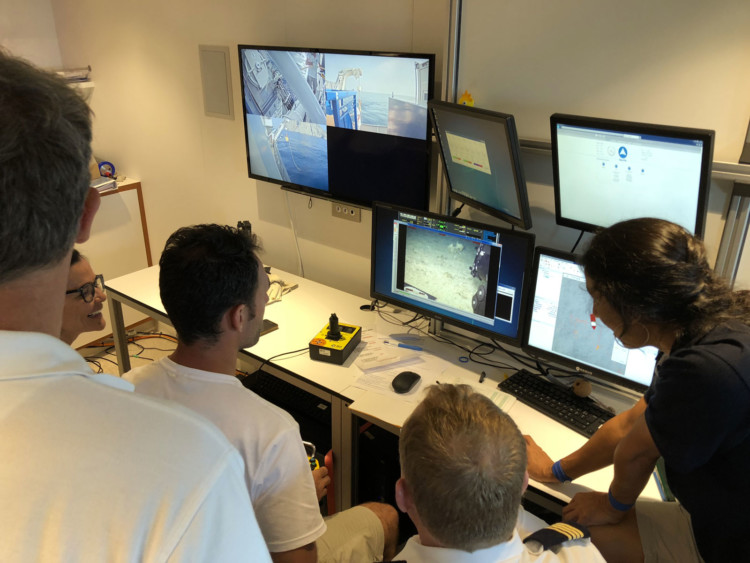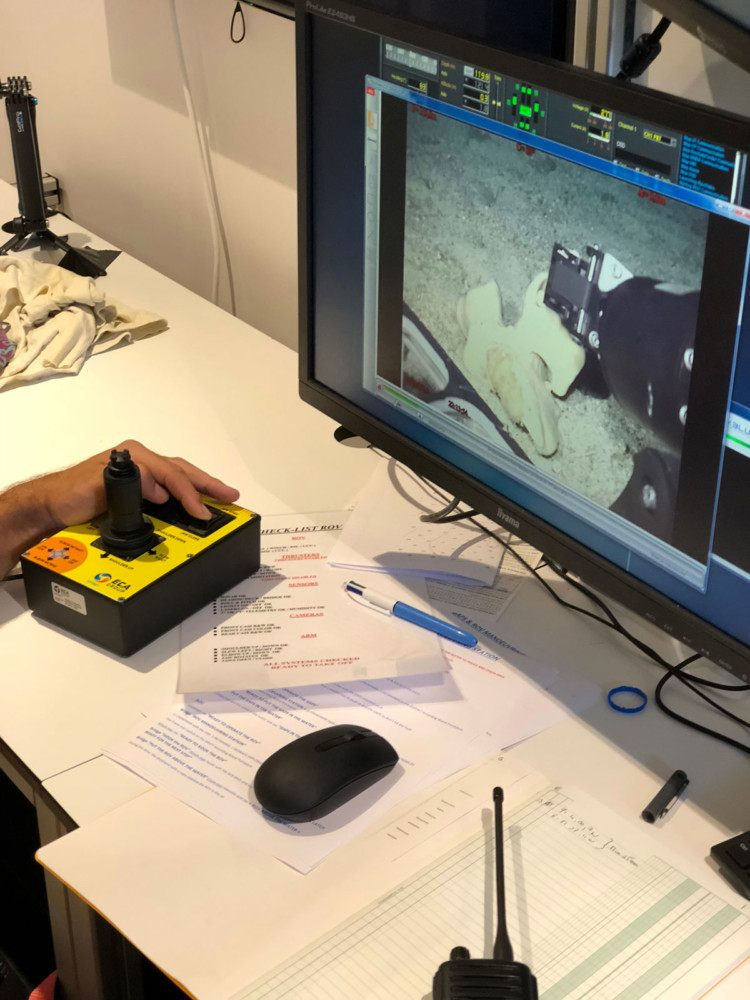HSH Prince Albert II of Monaco left Badu amongst feelings of friendship and affection. The Sovereign and the Monaco Explorations team returned to the Australian continent, carrying with them a strong connection to the Badu community and a commitment to their preservation.
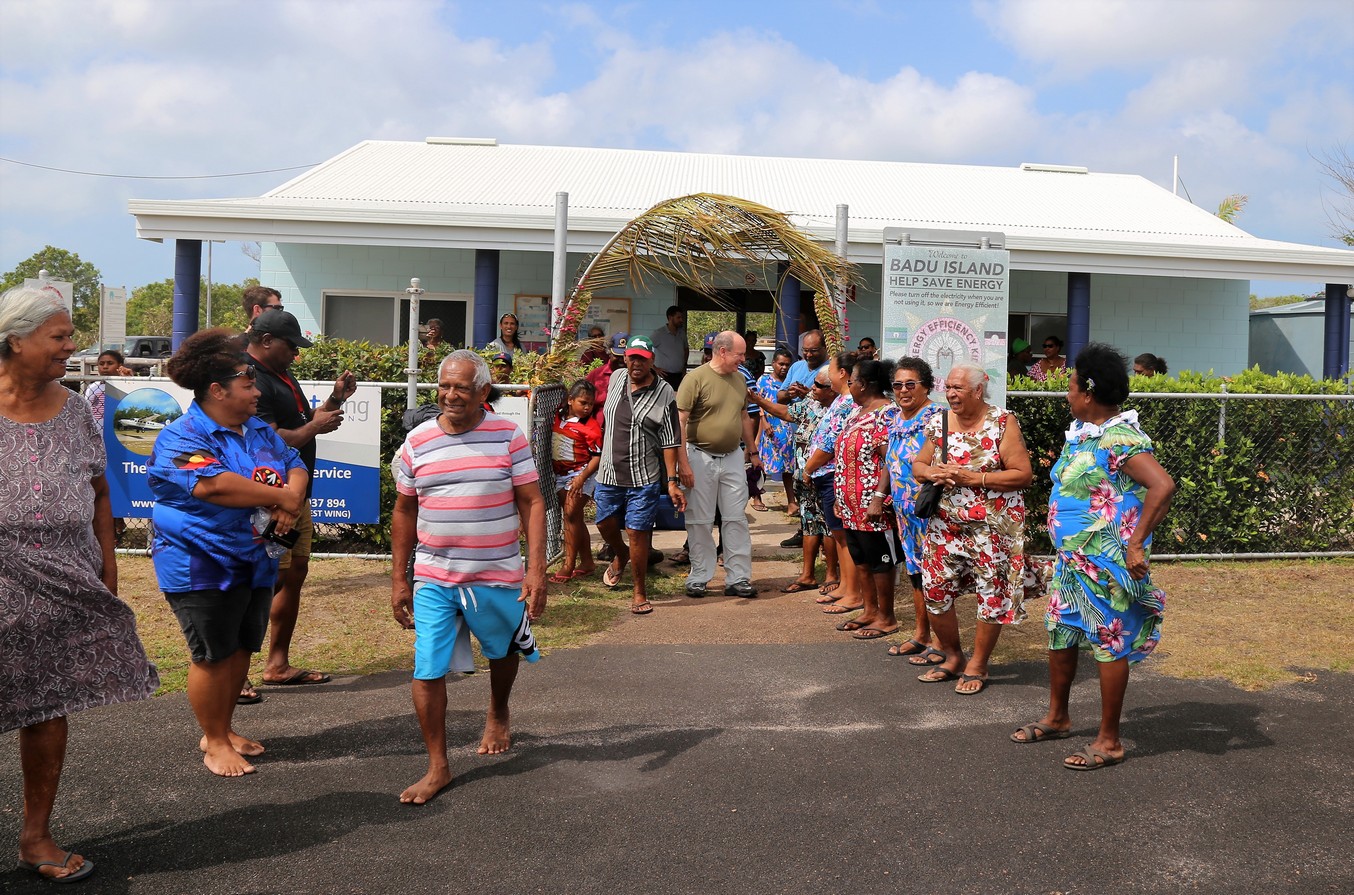
HSH Prince Albert II of Monaco took part in an aquatic hike in the beautiful grounds surrounding the island of Badu.
Hoping for a few encounters with marine turtles and Dugongs, the Sovereign has instead seen the effects of global warming on Torres Strait coral reefs, which have suffered from severe and repeated bleaching episodes in recent years. A degradation that he will be able to testify to this week at the International Coral Reef Initiative (ICRI) conferences in Townsville, Australia, where Monaco is co-chairing this year.
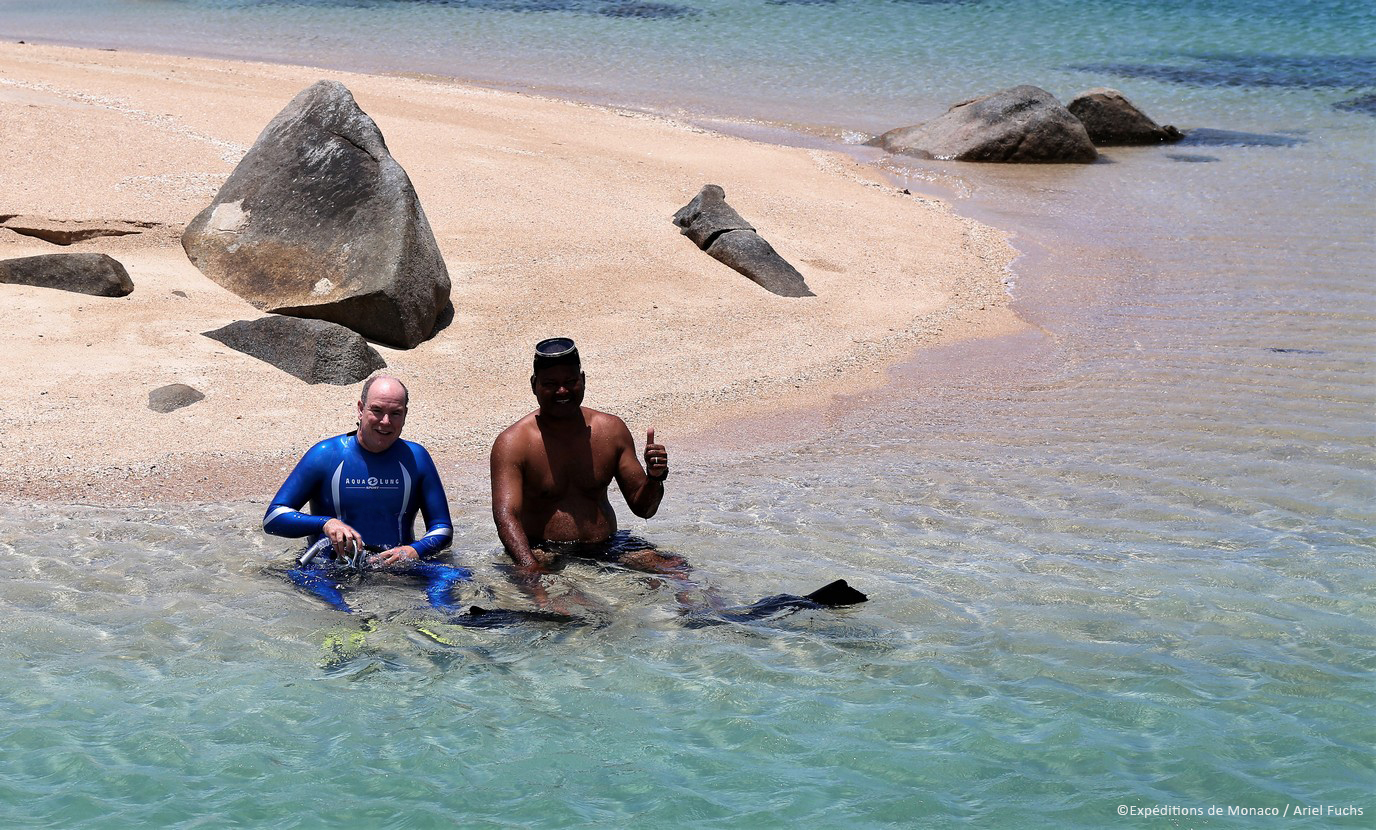
In Badu, planting a young coconut palm tree is a way to leave one’s footprint in the ancestral territory. It is also a tribute of respect to Mother Nature, and an act of faith to ensure the revival and the sustainability of all life. It was more than an honor for HSH Prince Albert to participate in this important and meaningful tradition.
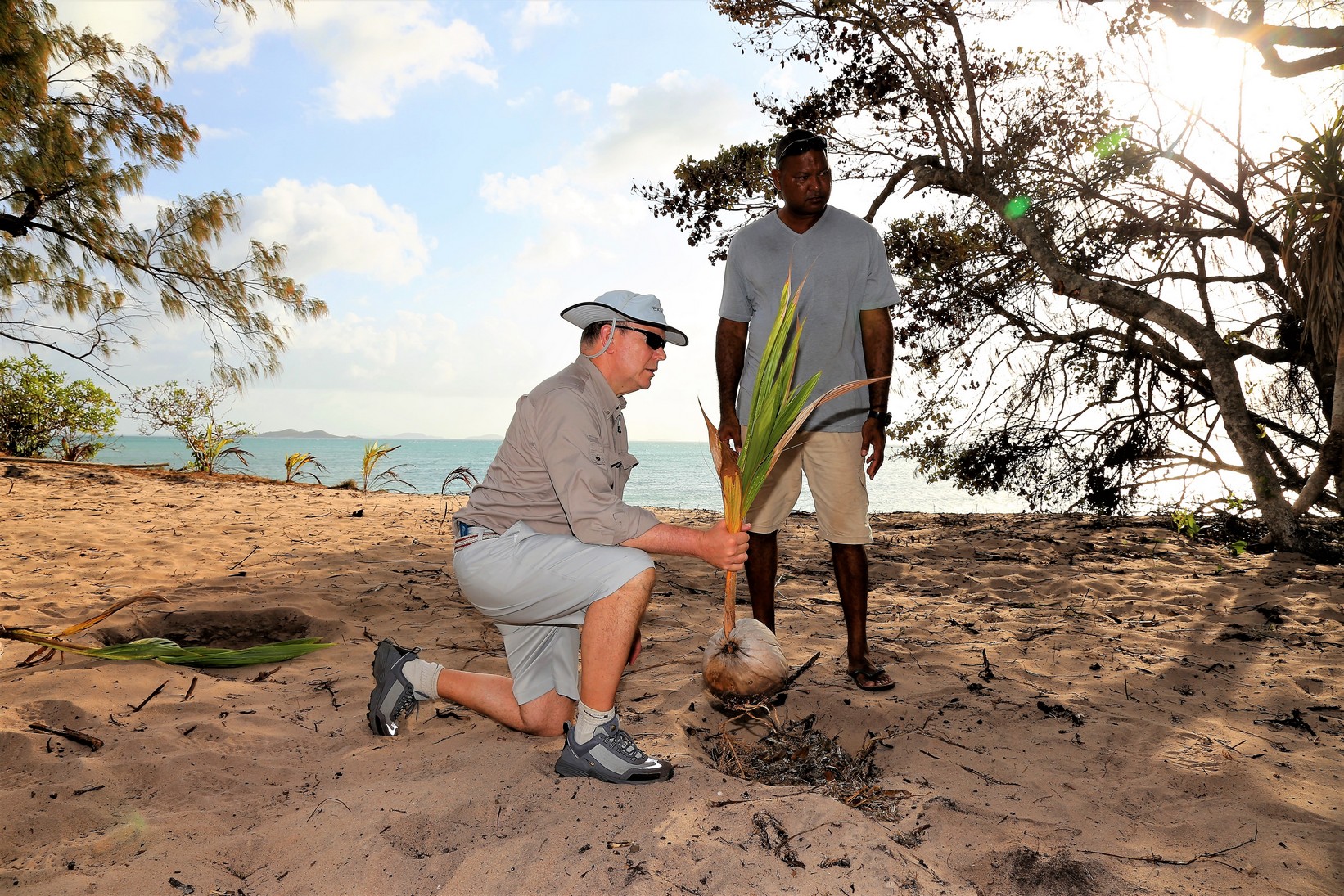
The Sovereign was invited to the primary school of Badu Island. He participated in an honorary graduation ceremony for the children of the island community. The speeches emphasized the principles bound to environmental protection, particularly the marine environment. The message consistent in all of the speeches given by the school headmaster M. Patrick Rhin, Council Representative M. Laurie Nona, and the Sovereign underlined the need to protect the future by caring for the environment. After the ceremony and the distribution of the presents brought by the Sovereign, the group posed for photos.
Early this morning the Sovereign and Alick Tipoti walked on the seashore to discuss the erosion of Badu’s coasts during the “king’s tides” and the disappearance of corals after bleaching. Badu has experienced the most severecoral bleaching in all of Australia, estimating that more than 80 % of corals died in numerous places of this part of the northern Great Barrier Reef.
The Sovereign was invited to the primary school of Badu Island. He participated in an honorary graduation ceremony for the children of the island community. The speeches emphasized the principles bound to environmental protection, particularly the marine environment. The message consistent in all of the speeches given by the school headmaster M. Patrick Rhin, Council Representative M. Laurie Nona, and the Sovereign underlined the need to protect the future by caring for the environment. After the ceremony and the distribution of the presents brought by the Sovereign, the group posed for photos.
This afternoon HSH Prince Albert II of Monaco arrived in Badu in Australia’s Torres Strait. He was welcomed, alongwith the Monaco Explorations team, by Councillor Laurie Nona, and Ronnie Nomoa from the “Council of Elders” with traditional song and dance from the Badu Island and a speech in the native language.
The Sovereign was welcomed by host Alick Tipoti and his family. The Tipoti’s offered him a frangipani tree flower garland, a traditional symbol of welcome from Polynesian influences.
Afterward, the Sovereign greeted the crowd who had gathered to welcome him, taking photos and enjoying the company and the emotional spirit. Because this is the first time a Head of State who is committed to highlighting the impacts of climate change on small island communities has visited Badu, the feelings of extreme gratitude for this visit were present in the crowd.
This afternoon the Sovereign arrived at Badu (Torres Strait, Australia). He responds to the invitation of artist Alick Tipoti who wants him to discover the island life of his community. More specifically, it is a question of measuring how pollution and drift nets from large fishing units are destabilizing marine biodiversity and the many negative repercussions this has on populations living in harmony with the ocean.
Taking advantage of his participation at the Our Ocean International Conference in Bali, Indonesia, Prince Albert II traveled to the small island of Badu in Australia for an immersion in the culture of the Torres Strait Islanders.
H.S.H. Prince Albert II, who is known for his efforts to tackle climate change and his commitment to protect the marine environment, responded to the invitation of the Torres Strait Indigenous artist and activist Alick Tipoti to discover the Torres Strait and interact with the community. The men first met at an exhibition in Monaco in April 2016, where Mr Tipoti was a featured artist at ‘Taba Naba – Australia, Oceania, Arts by Peoples of the Sea’ exhibition, hosted at the Oceanographic Museum.
Even though they live worlds apart, Alick Tipoti and H.S.H. Prince Albert II share a deep concern for the environment and have united to help protect the world’s oceans.

H.S.H. Prince Albert II discussed the relation between the Badulgul people and the sea with Elders and heard about the challenges facing remote communities like Badu Island including rising sea levels, plastic pollution in the ocean and the scourge of ‘ghost nets’ – abandoned or discarded fishing drift nets which are the invisible killers of large sea creatures like turtles, dugong, dolphins and sharks.
For three days a dialogue was opened up between the two cultures, driven by an interrogation: how do these distant societies living on an island of limited size and resources, have naturally applied for millennia a sustainable way of life, while the western world still runs after it?
The interdependence of this community with its environment (nature supports them and they strive to maintain it in return), their way of exploiting resources, their knowledge and their practice of the marine world are sources of inspiration for our modern and Western societies, as well as for the message delivered by HSH the Prince to the highest authorities.
With this mission, the Monaco Explorations show that they are not only interested in marine species and the health of the ocean, but also in the complex and diverse relationship between humans and the marine environment.

Andrea Polanco and Giomar Borrero are marine scientists from Invemar Colombia (Institute of Marine and Coastal Research) in Santa Marta. They are on this mission in Malpelo with the goal of better understanding the biodiversity and ecosystems of the area through the collection of samples via diving and use of the Remote Operated Vehicle (ROV). Their research will help them know which species exist here and where, and through the collection of specimens they will use barcoding to understand the similarities and differences of the species.
Andrea is a fish taxonomist and deep-sea fish specialist and the curator of fish at the MAKURIWA Museo de Historia Natural Marina de Colombia, which is part of Invemar. Giomar is the curator of Echinoderms at the museum and her research is focused on molecular DNA, invertebrates and Echinoderms (sea stars, sea urchins, sea cucumbers, sea feathers).

In addition to using the ROV to understand biodiversity of deep-sea fauna, the INVEMAR team will work with the Megafauna team to understand their more advanced technologies. In fact, the filters collected here will go back to Colombia with Andrea and Giomar and they will bring them to Montpellier to collaborate with the Megafauna team.
Collecting Samples with the ROV
The ROV we have onboard our vessel is able to go to 1000 meters in depth. Today, it is the first time our 3 technicians will use the ROV and they have decided to make a test at 120 meters. There are 2 technicians on the deck to lower the ROV into the water and manage the crane and cable, and there is one technician in the control room who controls the landing and robotic arm, which collects samples into the ROV’s drawers. Andrea sat in the control room to take screenshots from the ROV’s cameras and to choose which samples to collect. After the ROV is brought back on board, Andrea and Giomar preserve them in the lab.
